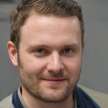What does the scientific community think of "dream control"?
The mystery and potential of the dream world is far beyond our imagination

Dreams are arguably one of the most mysterious subject experiences in the human body.
Those produced during sleep are blurred images, sounds, sensations, and even fragments of thought: some are a mapping of the anxieties of everyday life, others are a whole new world of light, and still, others may even bring a revelation that is extremely helpful to reality.
The chemist Kekule, who dreamed of an articulated snake and learned the molecular structure of the benzene ring, the legendary golfer Jack Nicklaus, who used to practice "previewing" his game in his dreams, and Paul McCartney's classic "Yesterday" from his dreams... ...
One case after another seems to remind mankind that the mystery and potential of dreams are far beyond our imagination.
German chemist Kekule claimed that he realized the structure of the benzene ring because he dreamed of an articulated snake

Ancient Egyptians slept on "dream beds" in their temples to receive divine guidance in their dreams, and the ancient Chinese had a famous tradition of "interpreting dreams by the Duke of Zhou". In the beginning, we felt mysterious, sacred, and even reverent toward dreams.
With the development of rationalism and scientism, the analysis of dreams gradually extended from theology to philosophical discussions (Zhuang Zhou's dream butterfly style ontological skepticism), and then to psychological research under the impetus of researchers such as Freud and Jung in the 19th century, and even to neuroscience research in modern times, which is more concerned with experimental data support.
As research progressed, human attitudes toward dreams shifted from awe to curiosity, and modern man even tried to exploit it. The most famous idea of dream exploitation should be the 2010 film "Inception" directed by Nolan. In the film, criminal gangs use high-tech equipment to create and share dreams with others, thereby stealing confidential information and even implanting ideas.
So, in fact, can humans create or control their dreams actively?
In the movie "Inception", a device connected to the nervous system and psychostimulant drugs can bring people into the same dream state. The members are trained to stay awake in the dream state
Many people may think that dreams are uncontrollable and that we can only passively accept the process of dreaming and its content. But the truth is that for some people dreams are actually "knowable and controllable" to some extent.
The scientific community defines lucid dreaming as an experience in which the dreamer is aware that he or she is dreaming and has a degree of control over the people, things, circumstances, and episodes in the dream.
Interestingly, the percentage of humans who can lucid dream is not very high. It's just that the private nature of the experience of dreaming makes it so rare that people will communicate with each other, and many dreams don't leave a clear memory when we wake up, leading most people to be unaware of the widespread existence of lucid dreaming.
A 1988 study of lucid dreaming conducted by Jayne Gackenbach and Snyder, Ph.D., psychologists, showed that 58% of the people interviewed had experienced lucid dreams. Although such data is not scientifically rigorous due to the highly personal nature of dream judgments, it is enough to show that there are far more people who have lucid dreams than we think.
Feynman, the physics guru, is also a "lucid dream master" who claims to be able to go directly from a lucid state to a lucid dream. As a side effect, he often wakes up in a "ghostly" state and is terrified.
This wonderful dream state between waking and sleeping is not only widespread but also has a "long history". As early as the ancient Greek period, Aristotle recorded the experience of "knowing dreams in dreams". In addition, the unbroken record of lucid dreaming throughout history has convinced researchers that it is a human instinct rather than a "variant" or psychopathic experience.
The Dutch psychiatrist Van Eeden first coined the term "Lucid Dream" in his article in 1913, and half a century later the philosopher and psychologist Shelia Greene took note of such descriptions, compiled the fragmented research, and summarized a set of characteristics of lucid dreaming and compared it to the phenomena of rapid eye movement sleep and false awakening. This was the first time that lucid dreaming was linked to the phenomena of rapid eye movement sleep and false awakenings.
(Note: False awakenings are those situations where we "wake up" in a dream and dream that we are performing a daily routine)
We all know that long-term observational experiments have demonstrated that dreams are strongly associated with the rapid eye movement period of sleep. During REM, the EEG shows brain activity that approximates the waking state. And Hillier's report also mentioned that lucid dreaming also occurs mostly during the REM phase.
The brain waves in the rapid eye movement phase are the closest to those of the waking state
All of the above studies are derived from very subjective data collection, where the subjects say they have lucid dreams and describe their dream experiences in detail, but how can scientists confirm their existence from a purely objective point of view?
In 1975, Dr. Keith Sheehan solved this dilemma through an ingenious experimental design. Hearne first discovered the regular rotation of the subject's eyeballs during the rapid eye movement period, and upon awakening, the other person was told that the subject seemed to be entering a lucid and controlled dream state at that time.
He then found another experienced lucid dreamer named Alan Worsley and agreed with him in advance on a regular set of eye movements. Alan then observed the dream world in the lucid dream state according to the agreed eye movement patterns (e.g., left, right, left, up, down), while Sheen captured the consistent corresponding eye movement patterns directly in reality through electrooculography.
This was the first time in scientific terms that waking consciousness and dream consciousness interacted with each other, and the results were published in April 1975 in the Journal of Psychosocial Research, where they were formally recognized by the academic community and attracted the attention of a large number of researchers.
Dr. Keith Hearne with the experimental apparatus he designed
Inspired by Dr. Hearne's interactive approach to research, the field of lucid dreaming welcomed a researcher who would be obsessed with it for the rest of his life - Stanford psychophysiologist Stephen LaBerge, Ph.D. In 1980, at the age of 33, Stephen began studying lucid dreaming and further developing Dr. Hearne's approach to research in his doctoral dissertation. This was followed by an unstoppable effort.
After five years of research, he managed to use this technology to solve another question that has plagued mankind for years: Does the perception of time in the dream world coincide with a time in reality?
The interpretation of dream time in Inception is consistent with common perceptions but not very scientific
Stephen asked the subjects to count in the lucid dream state while making regular eye movements. For example, the subject was in the dream for tens of seconds while doing ten eye movements observing the upper left corner. The results showed that the perception of time in lucid dreams was identical to that in waking life - "time" in the dream state did not slow down.
This confirms a long-held suspicion of scientists: the reason why we feel that time becomes longer in dreams is not that the human brain is faster or something like that, but because dreams are often composed of discontinuous jumping segments, and we only remember that we seem to experience the process from early morning to dusk, but ignore that there are no details in them, that they "jump". past a few dream segments.
This explains why, in most cases of dream thinking, there are only epiphanies, but not results that require long calculations and tedious work to be accomplished in the dream.
After more than thirty years of research, Steven LaBerge has developed a set of "lucid dream training methods", which he believes that all people have the potential to achieve lucid dreaming and that it is possible to do so with a certain amount of training.
The methods of inducing lucid dreaming can be divided into three types: the cognitive method based on experience, the external stimulation method based on experiments, and the hybrid method with the help of chemical agents.
The first step to entering the lucid dream state is to "know the dream". In the cognitive method, it is recommended that the person should regularly check whether he or she is dreaming while awake (e.g., jumping up and feeling the time of vacancy).
Stephen, who set up the Lucid Dreaming Institute, also tried a more ruthless method - the invention of lucid dreaming blindfolds. In their long-term experiments they tried sound stimulation, light stimulation, electrical stimulation, vibration stimulation, balance changes, and other external stimuli, and finally found that the success rate of light stimulation was the highest.
The working principle is to detect the frequency of human eye movements and find that the wearer is in a dream when the light is released to interfere with the dream state, thus reminding you that you are in a dream state and inducing lucid dreaming.
Lucid dreaming aids, generally need to be used under the guidance of psychologists with training, which means that those on a treasure will not work
To become a lucid dream master, of course, is not only to "know dreams", but also to learn to create them. Researchers recommend that those who try it think about what they want to dream about before they go to sleep, as much detail as possible to help them better manipulate their dreams. For example, if you want to fly in your dreams, it can be helpful to find first-view videos of paragliding players. (Otherwise many people in lucid dreams can only puff like a chicken in the air weightless ......)
Another point is the training of dream recall ability. This is logically interesting, think about it no matter how cool you are in the dream if you wake up the moment you forget everything, then in the reality of the waking state you are not cool at all, who has the motivation to study the practice?
Therefore, the cognitive method will recommend that try to develop the habit of "remembering dreams", each time you wake up first try to recall the contents of the dream or even take a small notebook to write down. Some devices for external stimulation, some of which can be set to wake up the wearer with a strong shock at the end of the rapid eye movement period, will indeed greatly increase the likelihood of remembering dreams. (But may have the side effect of sleep deprivation ......)
Stephen's words when discussing lucid dreaming with Joseph Gordon-Levitt, one of the stars of "Inception As for studies related to pharmaceutical-induced lucid dreaming, researchers are still taking a more conservative approach.
In 2018, in a double-blind placebo-controlled trial, 121 volunteers took galantamine, and as a result, some participants found that their ability to lucid dream increased by 42% compared to self-reports over the past six months, and 10 were having lucid dreams for the first time. It is hypothesized that galantamine allows for the accumulation of acetylcholine, which enhances memory and self-awareness during dreaming.
But for researchers, being able to induce lucid dreaming is only the first step; what's more important is what we can do with it.
The eye movements in the lucid dream state (bottom) are much higher than the normal rapid eye movements (top)
The most important discovery so far and already put into practice is the inhibitory effect of lucid dreaming on nightmares.
There are various reasons for human nightmares, which may be due to excessive stress in life or simply because the bed is uncomfortable, but the most difficult to the top is the various post-traumatic stress disorders (PTSD). People may develop psychiatric disorders after experiencing emotional, war, traffic accidents, and other traumas, which manifest themselves as nightmares or fantasies that constantly recreate scenes of the trauma.
In the case of nightmares related to this, triggering a lucid dream gives the person a high probability of "reconciling" with the object of fear in the dream. For most people, lucid dreaming is a similar experience to being chased in a nightmare, where you can make yourself strong to repel the enemy through dream control, or being chased by something spooky, where you can suppress your fears and have an interesting conversation with them to dispel them.
The way PTSD sufferers dispel their fears in lucid dreaming is similar to this clip from Harry Potter
Other applications of lucid dreaming include sports simulation training, exploring human cognitive awareness, enhancing creativity, and even attempting to treat cognitive-related mental illnesses. However, these studies are still in their infancy, and the full picture of the dream state is not yet known, and we are not yet strictly sure whether it does more harm than good or more good than harm.
Therefore, on a personal level, the experience of lucid dreaming can be very exciting and refreshing, but it also has the potential to affect the quality of sleep and even mess up one's perception of dreams and reality. Therefore, it is advisable to try it only under the guidance of a professional psychologist or physician, and not to deliberately disrupt your routine.
After all, dreams involving psychiatric science are an area that we do not yet fully understand, and the dangers that lurk in them may not be worth trying.
About the Creator
Taufik Olu
Money is round. It rolls away.






Comments
There are no comments for this story
Be the first to respond and start the conversation.